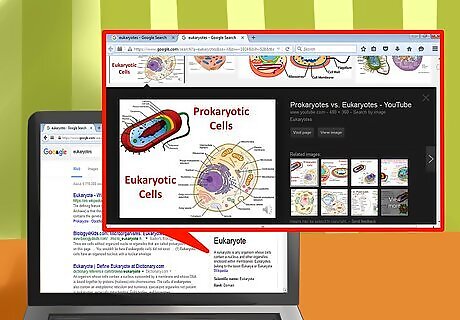
views
Engaging Students

Relate biology to everyday life. Some students will be naturally drawn to biology, while others will ask why they should care about it. All students will benefit if you can show how biological concepts and questions are relevant to daily life. This will deepen their appreciation of the science and make it more relatable. Do things like: Share with your class news items on medicine, DNA, the environment, population growth, and other topics that biology touches upon. Offer extra credit to students who will give a brief in-class report on a reference to a biological concept they came across in a television show, movie, etc. Ask them to explain the reference, what biological concept it dealt with, and why it is important. Talk about careers that draw on biology, such as medicine, pharmaceuticals, conservation, public health, etc. You can even invite individuals practicing in these fields to visit your class, talk about their work, and answer student questions.

Incorporate hands-on activities. If you can make the study of biology tangible for students, they are likely to be more invested in their education. There are lots of ways of bringing biology to life, so to speak. Students can do things like: Plant a garden to learn about photosynthesis. Raise butterflies or other animals to learn about the life cycle. Dissect specimens to learn about anatomy. Test samples of store-bought yeast to see whether or not they are alive. Look at slides of various kinds of cells.

Incorporate multimedia materials. Creating a little variety in the format of your instructional materials can make your biology course more lively. In addition to textbooks, try to incorporate videos, podcasts, and other forms of media when introducing topics in biology.

Look for ways to bridge technology and biology. There are lots of opportunities for those interested in technology to deepen their involvement with biology, and vice versa. Be open to new and exciting modes of instruction, and invite your students to share the technological concepts and tools that interest them. For instance: There are valuable resources devoted to using the popular game Minecraft in educational contexts, including biology courses. Allow students to utilize technology for assignments in your course. For instance, students with interest in web design might develop a website to illustrate a biological concept.

Utilize science games to teach biology. A little friendly competition in the form of educational games can be a nice way to spice up your biology course. There are resources available for developing biology-centered versions of games like: Jeopardy Quiz bowl Taboo Pictionary Twenty questions

Host biology-centered field trips. An occasional trip outside of your classroom can be a welcome change of pace and a real opportunity to enrich student’s understanding of biology. Depending on what is available in your area, and what your school will allow, you might be able to arrange a visit to places like: A local science museum A botanical garden A zoo A farm A research lab
Trying Different Learning and Teaching Styles

Try different approaches to teaching. Some learning is passive (students receive knowledge from an instructor), while some is active (students take more responsibility for exploring and understanding topics). There is room for both types in any classroom. The key is to find the right mixture and balance of the two. Incorporate a variety of instructional methods, including: Lecturing Cooperative learning (students help each other learn about a topic) Concept mapping Discussion Reading Hands-on activities

Make lectures participatory. Oftentimes, lectures are the most efficient way to present information to students. However, both students and instructors often want lectures to be more interactive. This can be a challenge if you are lecturing to a large number of students, but there are certainly ways of making it work. Utilize the Socratic method by periodically asking students questions. In a large lecture course, not everyone may have the chance to speak each day, but students will feel more involved. Have students come to the lecture with pre-prepared questions. You can then address some of their questions. This lets students know that they are being listened to. Consider incorporating iClickers or similar technologies into your lecture courses so that students can respond to informal quizzes or polls during class. This lets you gauge how well they are understanding a topic, and gives them an opportunity to get involved. In smaller classes, set aside plenty of time for open discussion. Expect students to be able to talk about biological topics, ask questions, etc.

Incorporate writing. Some students might think of biology as all about facts, data, and multiple choice questions. By giving them writing assignments, however, you will share an important part of the scientific process with them, and have an additional opportunity to assess how well they understand a given topic. You don’t have to overgrade students. It’s easy to incorporate low-stakes writing exercises in your class. For instance, at the end of each session, have them write a paragraph summarizing what they learned. Rather than assigning a grade to their responses, open the next class session by discussing them.

Use peer teaching methods. Allow some opportunities for collaborative learning. For instance, break students into groups and assign each group the task of researching a certain aspect of a topic (such as stages in the life cycle of plants). Then, have each group report to the whole class on what they have learned. Students will enjoy the fun and responsibility of teaching their peers.

Read journals and other resources on teaching biology. There are a variety of resources that can help you teach biology in fresh and exciting ways. For specific ideas, and to learn about new developments in teaching biology, regularly read journals and websites like: The biology collection at the Multimedia Educational Resource for Learning and Online Teaching (MERLOT). The American Biology Teacher CBE Life Sciences Education Biochemistry and Molecular Biology Education Bioscene: Journal of College Biology Teaching


















Comments
0 comment